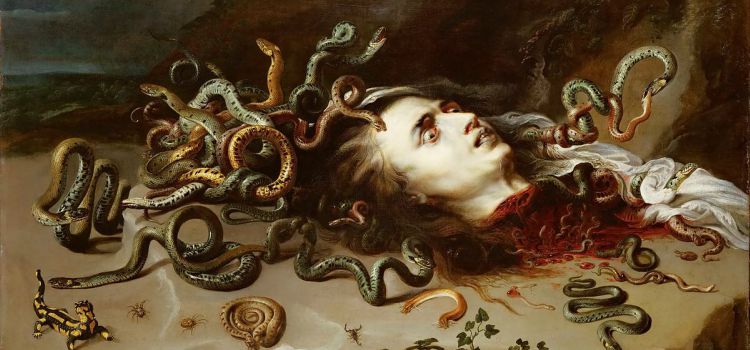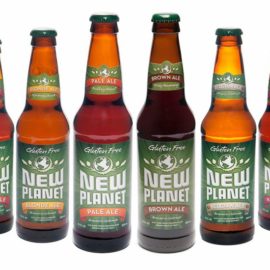
Let’s be honest: Some craft beers might qualify as monsters. Experimentation is great, but some things don’t need to come to market. Rogue, I’m kinda looking at you and your donut beers. I love you guys, but seriously. Also, pumpkin beers. Sorry, I just can’t get on board.
I’ve been thinking lately about the perception that we’re saturated or over-saturated with beer choices, or, rather, that the preponderance of choices has become a burden rather than a blessing. I wrote previously that breweries need to listen to consumers who are feeling overwhelmed, but I think beer drinkers need to take stock of themselves, too.
After all, markets don’t change all on their own. I mean, to some extent we can expect market pressures to push out bad beer. People won’t always pay $9.99 for a six-pack of inferior beer. Probably not, anyway.
But it’s also true that a lot of craft beers are really good. The “problem” of choice is a real problem because there’s a lot of great beer and only so much of us. And we’ve become pretty picky and demanding.
The beers aren’t the monsters: We are.
The word monster means “to show” (think of the word demonstrate). Frankenstein’s monster showed us that his creator, Victor, was the real problem. The craft beer monster is simply showing us that we have created a beer culture that we ourselves are not equipped to handle.
Not yet, anyway
We adapt. We always do, if not always in the best ways or for the best reasons. Something will change to relieve this sense of pressure on the beer consumer.
I won’t claim to be great at predicting the future. Some people are worried that the big guys will buy up all the little guys and then start shutting them down. That would certainly reduce variety. But so far the acquisitions seem to have been pretty good for companies like Goose Island and Ballast Point—and good for beer drinkers, in turn.
Some, like Stone’s Greg Koch, predict an increased interest in one’s region. This makes sense inasmuch as, when pressed, something from nearby feels safer than something far away. Shoot, I lived in Portland, OR, for four years and love Oregon beer, but I’ll still opt for an Illinois beer over an Oregon beer, all other things being equal.
App developers are counting on software to help us. I think we know that’s not likely. As much as I love and depend on my apps, all our apps and devices led us to this situation in the first place. They’ve accelerated our lives so that we can fit more into them, because we are the kind of people who are willing to put up with a lot of stress for payoffs like entertainment, food or drink, or financial security.
A Guess and a Prescription for our Beer Future
If you stand at the end of the beer aisle and then look an aisle or two over, what do you see? The wine aisle. And the wine aisle probably has more wines than the beer aisle has beers. Yet you don’t hear the same complaints about wine as you do about beer.
That’s because wine established itself in our culture consciousness as a luxury beverage. We buy expensive wines for certain occasions, and bargain wines for everyday. We know we may be sacrificing quality, but we don’t sweat having the options.
Beer is a bargain beverage in our culture. It’s Bud and Miller Lite and Coors Lite at 24 cans for $10 or whatever. Craft beer costs more to make, but in general we don’t want to pay that much more to consume it, so the prices tend to hover between $8.99 and $11.99 (at least in Chicagoland) for a 4- or 6- pack. We’ll pay well more than that for a bomber of something special, but in general we still want our beer pretty cheap.
The guess . . .
So, here’s my story about the future:
Beer drinkers, finally exhausted of trying all the new things, will start to rediscover their favorite go-to beers. They’ll start to choose maybe a dozen breweries that they want to keep up with, and they’ll start to become actually loyal in a way that we haven’t been for some years.
There will still be crazy styles, but we’ll see a return to classic styles done well, too, and it will be fun to have a favorite pale and a favorite pilsener and a favorite stout rather than just having the newest, strangest one. Stone Pale Ale 2.0 may be an example of this already starting: a really solid pale with just enough of a twist to get your attention.
Eventually, the remaining beers will be reliably drinkable, so breweries will be able to create price tiers within their own line-up. Founders is doing this already: their All Day IPA is very affordable in 12-pack cans, but their Old Curmudgeon is around $11.99 for 4 bottles.
We’ll become the kind of consumers who think about the occasion and our budgets and our moods and our local breweries. We’ll support the breweries we believe in, not just the ones with the zaniest ingredients.
Unless, I guess, you believe in the zaniest ingredients. We’re a big country with a big economy. There will probably always be room for people who want a peanut butter beer.
The prescription . . .
So, that’s my guess about our beer future. Here’s my prescription:
We need to be less impulsive as drinkers. We need to stop acting like web-surfers who can’t resist the clickbait headline about Kim Kardashian’s nude Instagram pic. We need to move beyond the stoner/party vibe so many small breweries go for. That may be your “roots” in the sense that you were once—maybe still are—that guy, but you’re not going to run a sustainable, value-driven business if you’re trying to hold onto your adolescence, and only sustainable businesses will be around in five more years.
The acquisitions and the emergence of True Craft signal a kind of crisis in American beer that also indicates a coming of age. The little guys are here to stay—many of them, anyway—and we’re going to see fewer beer monsters and more cool people sharing their passion for a great brew.
Image credit: Medusa, by Rubens/Public Domain


